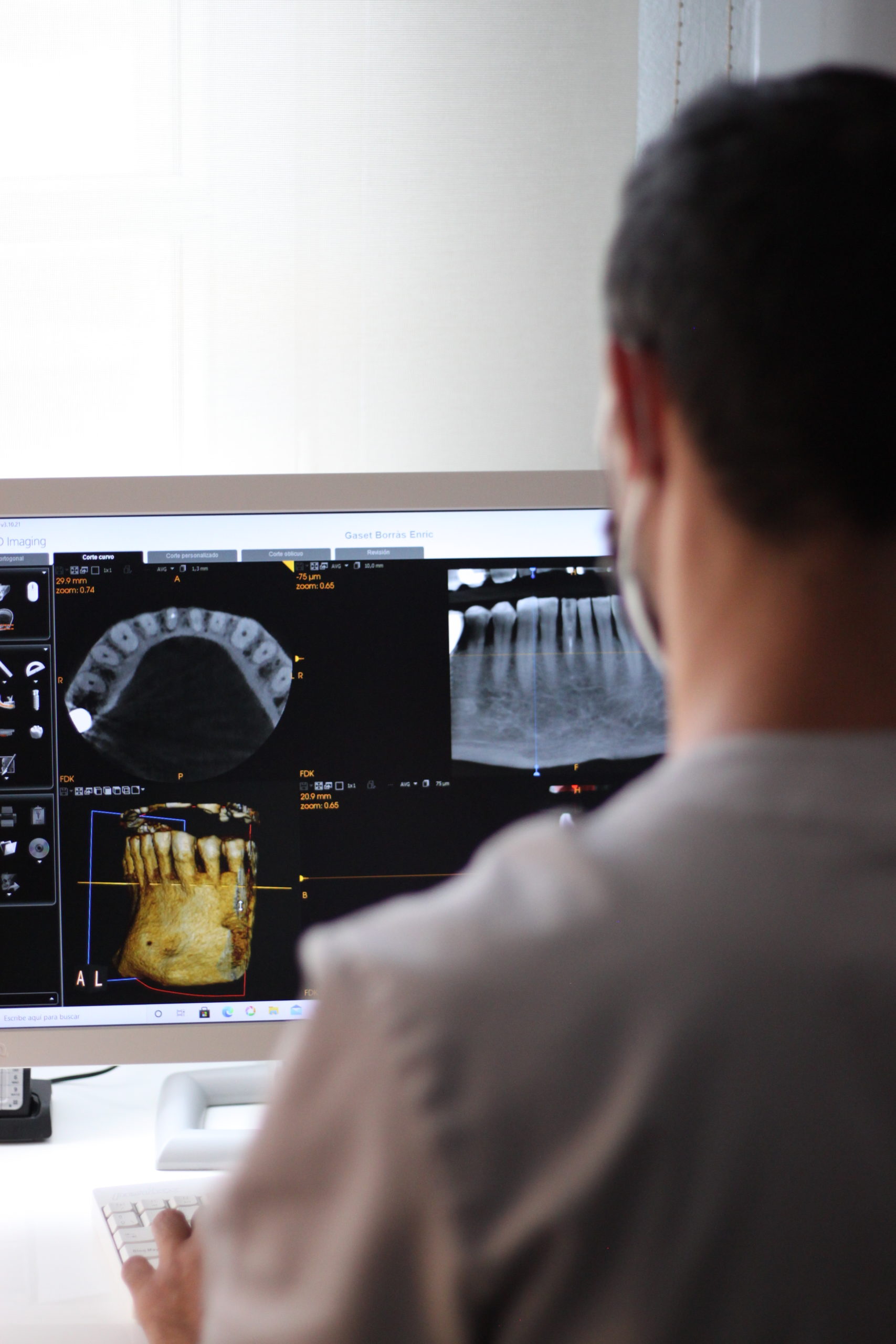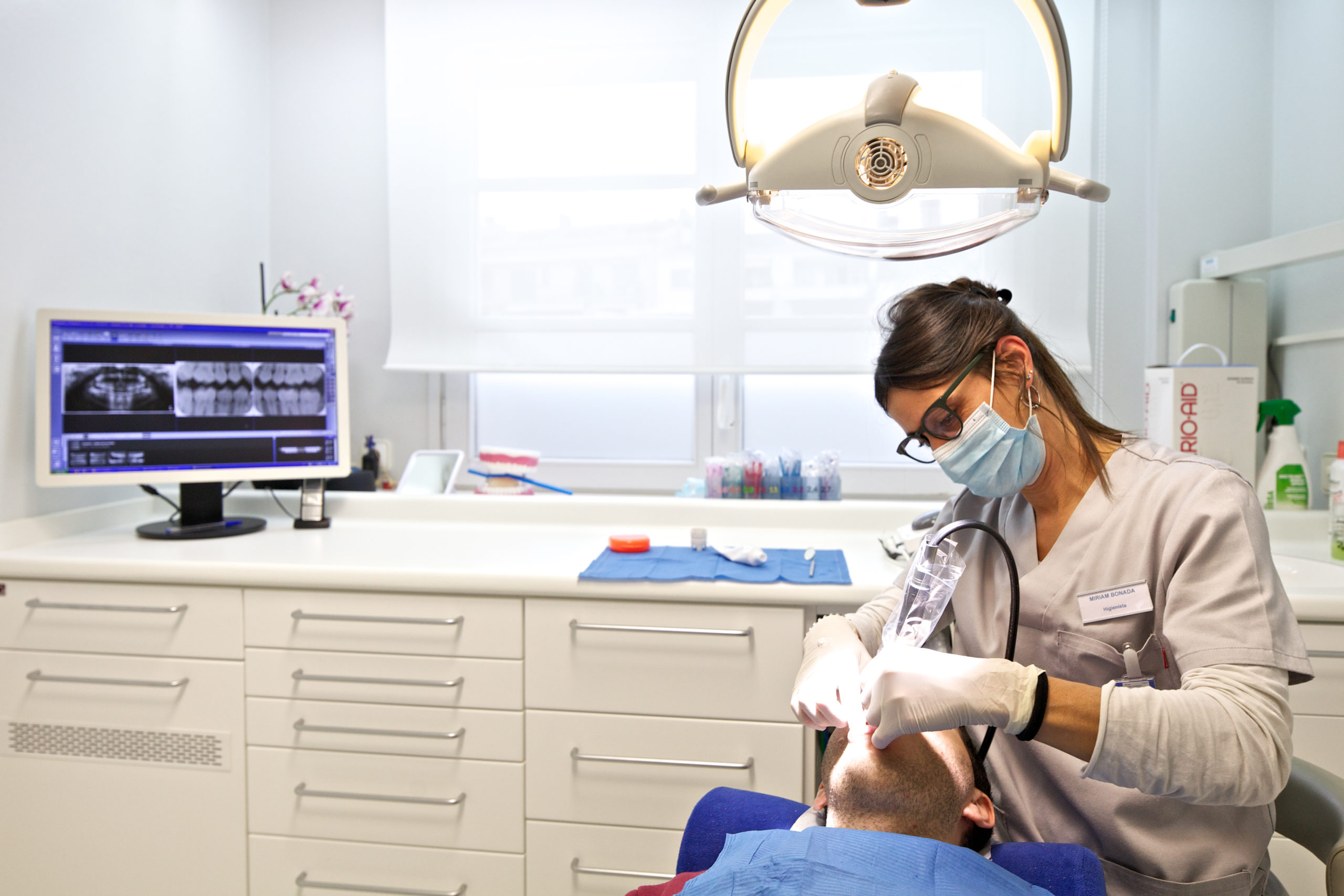DENTAL IMPLANTS
Today, the option that comes closest to recovering a lost tooth is that of dental implants, pure titanium or zirconia screws that we place in the jaws and that, once accepted by the bone as own, act as artificial roots.
The absence of a tooth is closely related to a worse quality of life and represents a major obstacle both functionally and aesthetically . In addition, when one or more dental pieces are missing, a series of consequences are triggered that worsen the general oral condition.
The teeth adjacent to the absent one tend to move towards the empty space, the antagonists seek contact with the absent tooth gradually coming out of the bone, the quality and quantity of the bone decreases due to not having a tooth (or implant) what to hold, etc. All this causes occlusion and bite problems, TMJ (temporomandibular joint) problems , difficulty brushing teeth , increased chances of cavities and gum problems .
PHASES OF IMPLANTOLOGY TREATMENT

1- PHASE PRIOR TO THE PLACEMENT OF DENTAL IMPLANTS – CAREFUL STUDY OF THE PANORAMIC RADIOGRAPHY AND CAT
After studying the patient’s history, we analyze the radiographs taken in order to make sure that there is enough bone around the future implants and that the placement of these will not cause any additional problems such as nerve injuries or aesthetic deficits that are difficult to solve once they have been applied.
2- SURGICAL PHASE – PLACEMENT OF DENTAL IMPLANTS
The sequence of surgical treatment with implants is simple. It is a routine dental intervention and we use the same anesthesia as for a dental extraction or filling of a cavity. Our specialist in implantology, la Dr. Mireia Martí, prepares the bone, places the implant, sutures and takes a control X-ray.
After one week of the placement of the implant, the points are removed and it is waited until it is perfectly osseointegrated with the different tissues of the patient to make the crown or prosthesis.


3- PROSTHETIC PHASE – DESIGN, MANUFACTURE AND PLACEMENT OF THE DENTAL CROWN
If the placement of the implant has not required bone or gum regeneration, after 8 to 12 weeks* we can take the measurements to make the prosthesis. The first thing we will do is make sure that the implant is properly integrated by measuring the implant-os junction with a device called Ostell.
Two tests are usually done on the prosthesis: that of the structure that will support the set and that of the final ceramic coating.
Once the patient and the doctor handling their case are satisfied with the aesthetic and functional results of the prosthesis, we proceed with its placement.
*The cases in which the placement of the implant has been accompanied by bone regeneration, gum grafts, sinus elevations, etc., require a longer waiting time than Dr. Martí will stipulate in each case.
FREQUENTLY ASKED QUESTIONS ABOUT DENTAL IMPLANTS
That allow crowns or fixed prostheses to be placed without the need to file natural teeth, a necessary action in case of opting for a bridge.
Absolutely nothing; it is like a natural tooth.
No more than other dental procedures. In fact, a tooth extraction can be more traumatic for the human body than the placement of an implant.
By a process known as osseointegration through which the body recognizes the surface of the implant as its own and the bone is fixed to the implant.
Yes, both the quantity and the quality of the bone must be optimal in order to ensure the viability and success of the treatment. The bed of each implant must be evaluated by scanning and radiographs.
Yes, and a lot. Smoking compromises blood microcirculation and, therefore, the process of joining the bone to the implant. The limit is around 10 cigarettes per day. Based on this amount, it is necessary to evaluate other factors such as age, bruxism, medical history, etc. in order to decide whether it is possible to carry out a treatment with implants.
No, we don’t recommend it.
Yes, as long as the loss of the tooth is not due to infection and the specialist plans to do so. On the contrary, it is necessary to wait a minimum of 2 months between the extraction and the placement of the implant.
During the osseointegration process there is a minimal chance that the implant will not adhere well to the bone. The procedure to follow in these cases is simply to extract the implant and reinsert a new one. At Clínica Dental Gaset Lacasa we only work with the world-leading Straumann® implants, and the chances of this happening are minimal.
Once the implant has been integrated and the crowns are placed, if the patient takes care of their implants, cleans them properly at home and attends regular check-ups and cleanings in the clinic, the implants have not to be rejected by the body.
Yes, they should be kept at home just like we take care of the health of our teeth. If the patient does not maintain them properly, we run the risk of peri-implantitis (inflammation of the tissue around the implant) and this can lead to its failure.
Yes, but the appropriate thing will be to make a discharge splint once the treatment is finished in order to protect them and thus prevent them from suffering excessive loads that could lead to the failure of the treatment.
If the sector to be treated is very aesthetically compromised or if the patient so wishes, we have resources to prevent a patient from having to remain without teeth while the osseointegration process takes place.
It is a treatment designed to last many, many years. Therefore, it is extremely important to evaluate not only the price but the quality of the materials, the durability studies of the implant brand, the placement process and, very importantly, the specialist who will treat you.
In any case, we know that it is not only an investment of the time you will devote to the treatment, but it will also be a financial investment. At Clínica Dental Gaset Lacasa, your treatment plan will always have a limited price and no misleading concepts that end up multiplying the final price exponentially. In addition, we have a financing service so that, if you so wish, you can pay for your treatment little by little.
